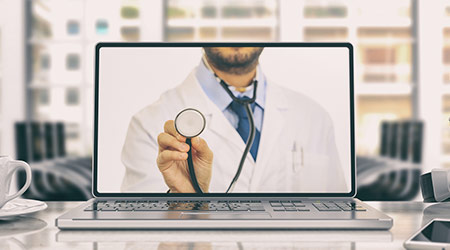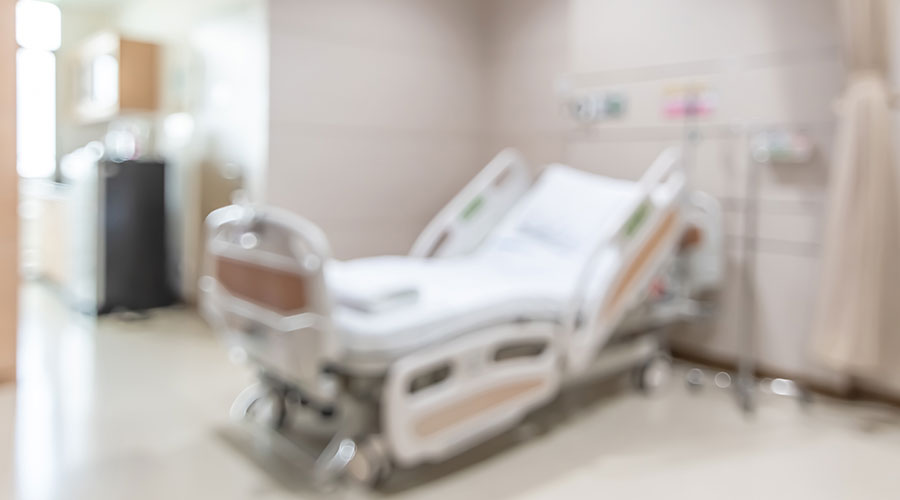Telemedicine and artificially intelligent applications in healthcare are one of today’s fastest growing markets. With the ability to streamline services, prevent human error, improve patient experiences, cut costs and harness massive amounts of data into applicable knowledge and insight, the potential benefits of telehealth apps are almost limitless. But in order to achieve high quality patient outcomes in medical facilities when using AI and telemedicine, it is crucial to preserve the human element and create a scenario where both technology and patient care can thrive in perfect harmony.
Patient outcomes are already being improved by AI and Telemedicine, and it is only a matter of time before these technologies become more refined and more widely used. The following is a list of today’s most promising tools and benefits.
Alleviate staffing shortages: Physician and nursing shortages are becoming increasingly problematic in the United States, thanks, in part, to the growing, aging population of professionals that struggle to manage unsustainable workloads. Telemedicine aims to bring relief through cost-effective and time-saving virtual care systems.
Artificial intelligence has the power to harness a wealth of data, improving the speed and accuracy of diagnoses. And in addition to accomplishing medical diagnostics in a more efficient way than their human counterparts, AI systems can perform triage, suggest personalized treatment programs, and determine what tests may be needed for further analysis, allowing healthcare professionals to maximize the effectiveness of their work hours.
Holograms in the operating room: Researchers recently unveiled Microsoft’s HoloLens Augmented Reality Headset, which enables the simulation of 3D holograms in a real-world environment. Because each patient possesses his/her own unique blood supply mapping, this particular tool has the potential to revolutionize many procedures, including the virtual overlay of a coronary patient’s arteries onto the actual patient for more precision and speed in the operating room.
The HoloLens is also being used in reconstructive surgery because of its ability to identify tissues that have ample blood supply for the promotion of healthy, new tissues. The technology is also valuable in cancer-related surgery because of its capacity to ensure the full removal of tumors. Hologram applications also result in surgeries being less invasive, thus improving patient recovery times and outcomes.
Remote diagnostics and networks: The power to enhance the care of patients in remote parts of the world with mobile diagnostics and networks is at our fingertips. Current mobile connectivity allows the electronic transfer of patient data to emergency healthcare centers before the ambulance’s arrival, while Teleradiology has the potential to assist field workers and provide instant access to a global network of specialists.
New technologies are in development; some of which are designed to automatically flag critical data and instantly initiate contact with a medical professional. Viz LVO is a software that detects LVO strokes in patients at smaller hospital facilities. Once detected, the system immediately sends an alert to a stroke specialization centre where the patient can be connected with a physician. Since stroke patients can lose up to 2 million brain cells, it is imperative to make every minute count to help minimize damage.
Individual homecare: Both Telemedicine and AI are displaying popularity in individualizing homecare, with a primary focus on elderly, low income and rural patients. But thanks to notable advances, individual home healthcare is quickly becoming a real possibility for all kinds of patients.
High-tech personal emergency response systems (PERS) and RPM devices (remote patient monitoring devices), will enable patients to receive treatment and medical attention from the comfort of their own homes, 24/7. Voice-enabled technology will permit patients to ask common medical questions, which would not only send data to physicians but also eliminate unnecessary follow-up visits. This type of technology will be especially valuable for senior patients who have difficulty using computer or tablet interfaces.
At the moment, AI robotics for eldercare are still in the early stages of operative use, but the development of “aging companions” is moving at a rapid pace because of their capacity to improve a patient’s quality of life by providing companionship and entertainment as well as aiding with monitoring and wellness applications that send medication, appointment or transportation reminders.
Predictive analytics: AI is making strides in the use of risk-adjusted data analysis for preventive technologies. Data-driven decision-making analyzes patient information, historic records, evaluations, demography and vitals to identify potential outcomes and create algorithms that can flag possible health issues. Today, such systems exist, scanning millions of unique patient records, medical images and neuroimaging data in order to interpret and analyze clues to identify patients at high-risk for health problems. Some hospitals use these preventive systems to implement effective fall prevention by discerning high-risk patients and establishing an alarm-based prevention protocol.
In the future, more preventative technologies will emerge, with the potential to spot a variety of high-risk patterns, from the development of heart conditions to the aggravation of asthma symptoms. All of these developments promise to provide care to patients before a crisis occurs, thus helping improve outcomes and reduce healthcare costs.
Mary Gorder is the Founder and CEO of Drs. On Calls, a telemedicine platform that develops, markets and operates house medical calls, virtual telemedicine service and concierge medical services.

 Technology Trends for Healthcare Real Estate in 2025
Technology Trends for Healthcare Real Estate in 2025 Advocate Healthcare Invests $1 Billion Into Chicago's South Side
Advocate Healthcare Invests $1 Billion Into Chicago's South Side Children's Medical Center Plano Opens New Patient Tower
Children's Medical Center Plano Opens New Patient Tower Layered Security on the Rise in Facilities
Layered Security on the Rise in Facilities OhioHealth Plans New Comprehensive Outpatient Cancer Center
OhioHealth Plans New Comprehensive Outpatient Cancer Center